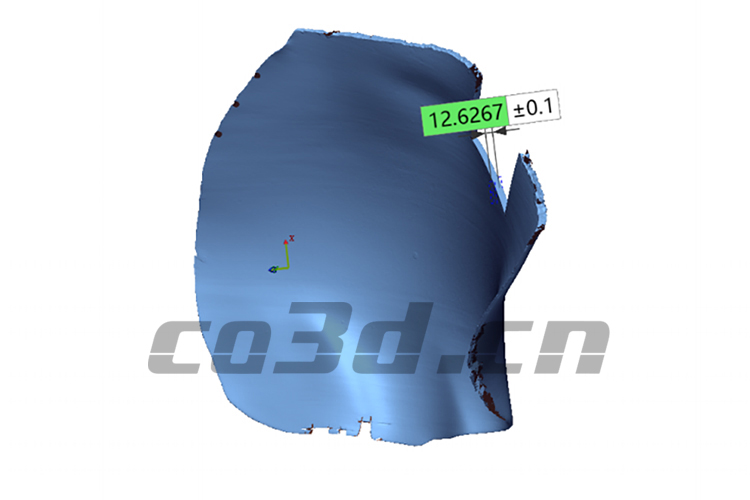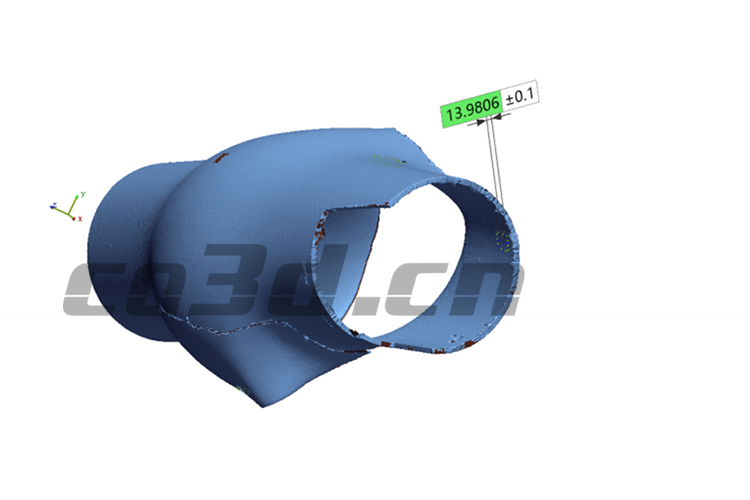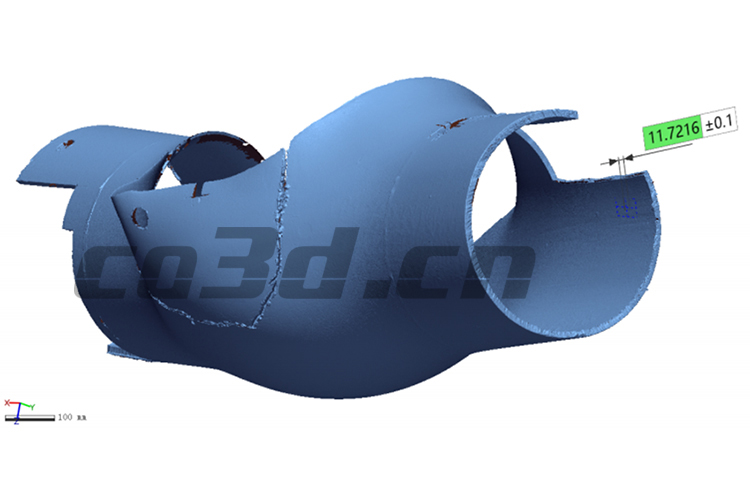Petroleum pipes are seamless steel pipes suitable for furnace pipes, heat exchangers, and pipelines in petroleum refineries. The customer needs to conduct failure analysis on the ruptured oil pipe, simulate and reproduce the failure phenomenon through analysis and verification based on the failure mode and phenomenon, identify the cause of the failure, and explore the process of failure mechanism.
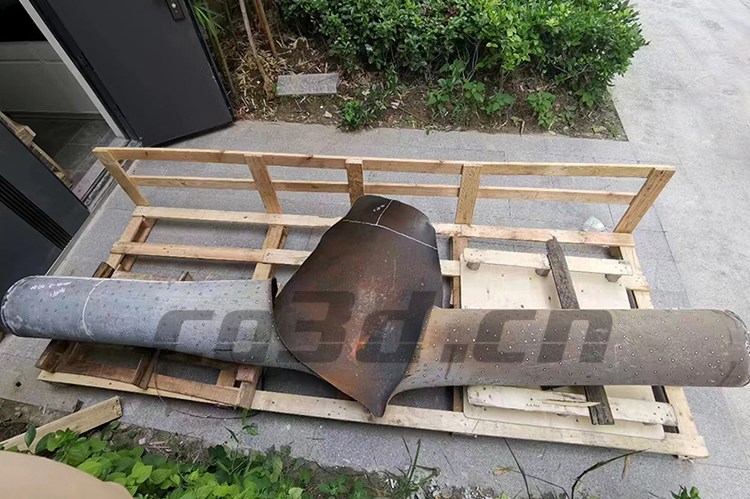
Practical problems
The oil pipe has a large volume and a curved surface. The customer needs to measure the thickness of the ruptured part of the oil pipe and the thickness related to itself, and the accuracy of data collection needs to be high. And the scanning time is required to be short, and the obtained data can be accurately detected and analyzed. The current detection methods are time-consuming and labor-intensive, and cannot achieve accurate analysis.
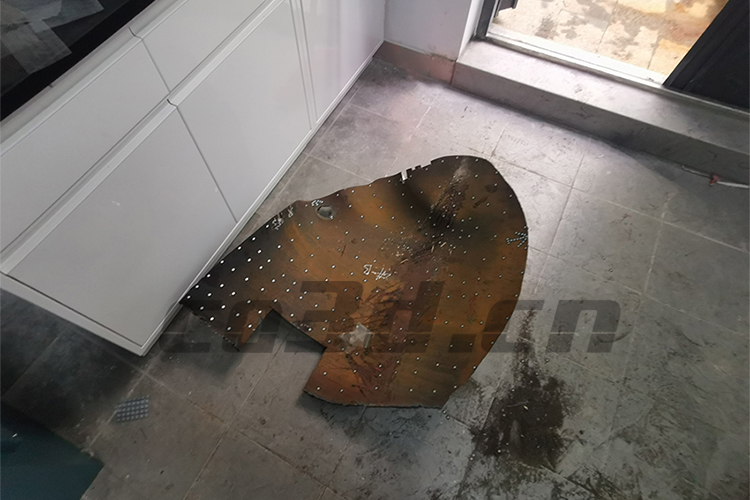
Co3d solution
Faced with scanning difficulties, Hualang engineers use a handheld 3D scanner HOLON B71, which is small in size, flexible and convenient to use, with a total of 30 blue laser beams and a scanning speed of 2.02 million times/second. The three modes can be switched freely, with industrial grade high accuracy of 0.01mm, minimizing cumulative splicing errors and highly restoring thickness data of the workpiece. The scanning time is short, the speed is fast, and it efficiently solves customer needs and improves work efficiency. Customers are very satisfied with scanning data, Provided data reference for later work.
